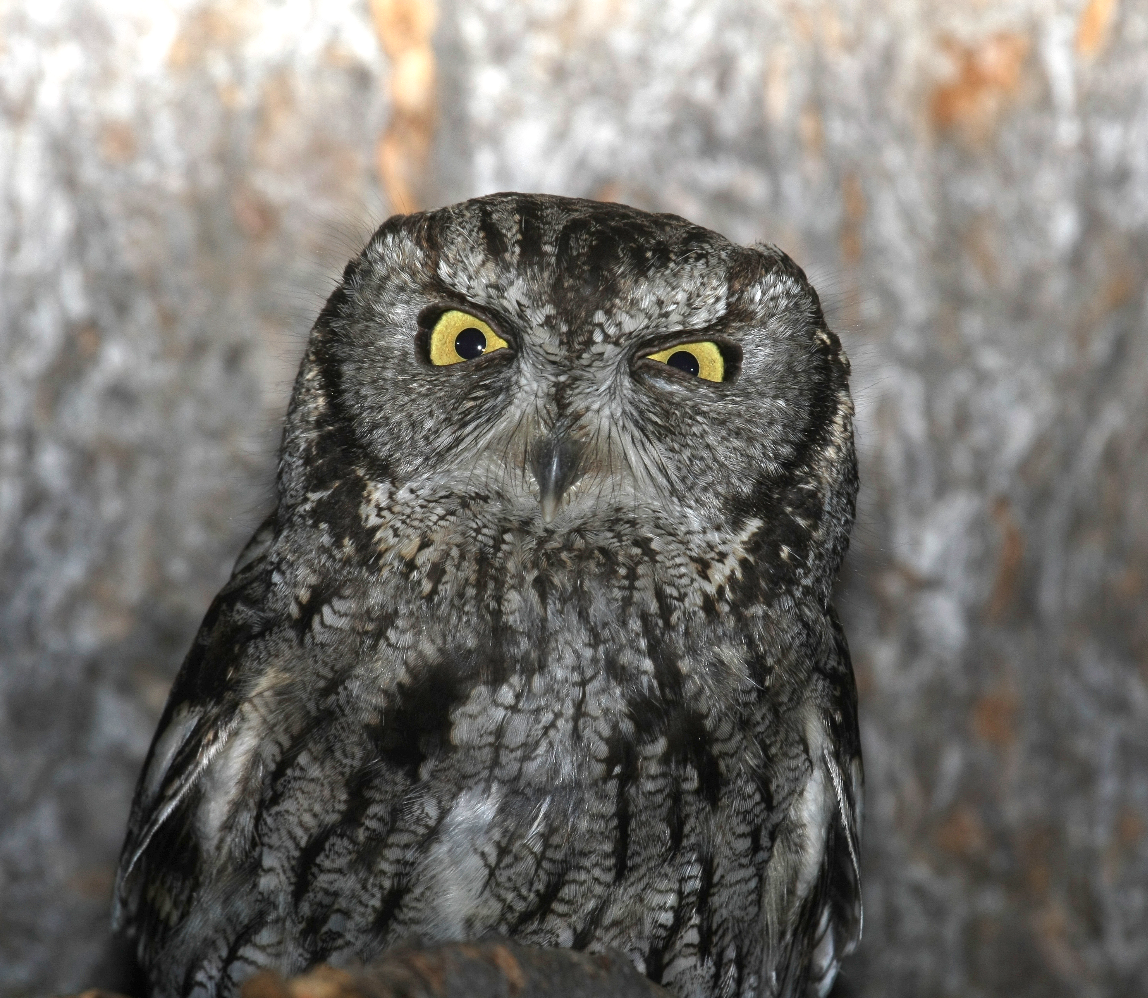Discover Oakmont
Student Life
Families
Parent Faculty Association
Description: The Western Screech Owl is a small, nocturnal, woodland Owl of western North America and is one of the west's more common Owls at lower elevations. They are squat-looking Owls that sit erect, with their plumage fluffed out, feet and legs obscured, and distinct ear tufts raised. The iris is bright yellow and the bill is gray to black, with tufts of bristly feathers around its base. The facial disk is bordered by black. The toes are yellow. Plumage is either mainly grayish or reddish-brown variegated dark and light, resembling a furrowed tree bark pattern. Adults have vertical patterning know as “streaking” while the juveniles have fuzzy, horizontal markings know as “barring.” They use the variegated plumage as camouflage. When threatened, the bird stretches its body and tightens its feathers in order to look like a branch stub to avoid detection, but will take flight when it knows it has been detected.
Size: Length 22-24cm. (Approx. 9.5” tall) Wing length 142-190mm. Weight 90-250g. Females are larger than males.
Habits: Nocturnal, with activity generally begining 20-30 minutes after sunset. Flight is noiseless with soft wingbeats and gliding. Will become motionless if disturbed at roost. Wings are broad and the head is held tucked in giving a flying bird a stubby appearance.
Voice: The male's most common call is a mellow, muted trill "hoo-hoo-hoo....", or bouncing ball song, that speeds up at the end, but maintains a constant pitch. It is given by the male during the mating and nesting seasons, but also during the autumn and winter. This call is primarily territorial in nature. A secondary song is a double trill of rapid bursts. Other calls are a soft "cr-r-oo-oo-oo-oo" given as a greeting call, and a sharp bark given when excited. Hear the WESO's call
Hunting & Food: Hunts mainly from a perch in open woodlands, along the edges of open fields or wetlands, or makes short forays into open fields. They also capture flying insects on the wing. Small prey is usually swallowed whole on the spot, while larger prey is carried in the bill to a perch and then torn apart.
An extremely wide range of prey species is captured. The most favored prey are small rodents and deer mice, larger insects, or small birds depending on abundance. Prey species include shrews, insects (including beetles, larval moths & butterflies), small birds, pocket gophers, voles, salamanders, kangaroo rats, wood rats, pocket mice, bats, grasshopper mice, gophers, frogs, locusts, and scorpions, crayfish, worms, snails, small fish, poultry, and barnyard ducks.
Pellets are medium-sized, averaging about 3.8 by 1.9 centimetres (1.5 by 0.75 inches). They are compact, dark gray, ovals composed of fur, feathers, bones, teeth, and chitin. Two to four pellets are cast each day.
Weso Adult Mt. Baldy

WSEO BABY MT. BALDY

WESO MT. BALDY WITH ATTITUDE!
